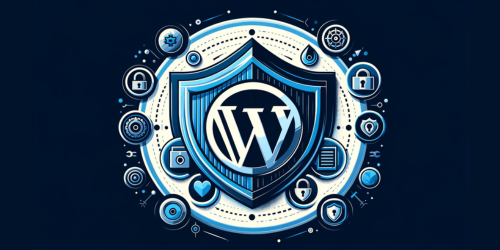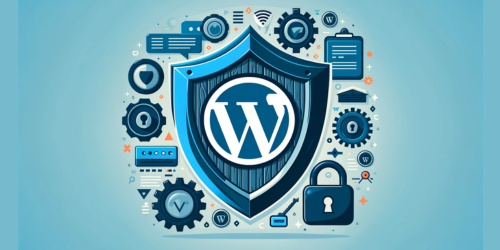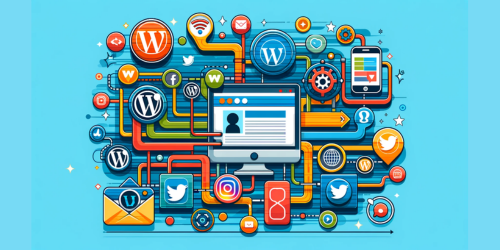Have you ever wondered what powers over 40% of all websites on the internet? The answer lies in a tool so pervasive yet often overlooked in its everyday significance: WordPress. This content management system (CMS) isn’t just a tool; it’s the backbone of digital creativity, a canvas for both the novice blogger and the seasoned developer.
At its core, WordPress File is a marvel of simplicity and flexibility. Born as a blogging platform, it has evolved into a comprehensive solution for website creation, managing everything from small personal blogs to large corporate websites. Its importance in the web development landscape cannot be overstated. WordPress has democratized web publishing, making it accessible to anyone with a story to tell or a product to sell. It’s a testament to the power of open-source software, continuously shaped by a global community of contributors.
In this article, we’ll navigate the intricacies of WordPress, from its file structure and setup to optimization and troubleshooting. Whether you’re a budding developer or a curious entrepreneur, understanding WordPress is akin to holding a key to the vast kingdom of the web. Let’s embark on this journey to unravel the secrets of the world’s most popular CMS.
1. Understanding WordPress File Structure
Navigating the WordPress file structure is akin to understanding the blueprint of a house. It’s where the magic of your website’s functionality and appearance is stored. At the heart of WordPress lies two primary directories: wp-admin and wp-content.
- wp-admin: This directory is the nerve center of your WordPress site, housing all the files necessary for the backend functionality. It’s the administrative area that you, as a website owner, interact with.
- wp-content: The most frequently accessed directory,
wp-content, is where themes, plugins, and uploads reside. It’s the personalization hub of your WordPress site. - Themes: Stored in
wp-content/themes, these files define the look of your site. - Plugins: Located in
wp-content/plugins, these add-ons extend the functionality of your WordPress site. - Uploads: All your media files are stored in
wp-content/uploads. - wp-includes: This directory contains most of the core WordPress code, including scripts and PHP files.
2. Setting Up WordPress: A Step-by-Step Guide
Installing WordPress is a straightforward process, regardless of the platform. Here’s a general guide, with a focus on Linux and the LAMP (Linux, Apache, MySQL, PHP) stack:
- Install LAMP Stack: Begin by installing Apache, MySQL, and PHP on your Linux server. WordPress Installation on Linux provides a comprehensive walkthrough.
- Download WordPress: Visit the WordPress download page and get the latest version.
- Create a Database: Use MySQL to create a database for your WordPress installation.
- Configure wp-config.php: Edit the
wp-config.phpfile with your database information. - Run the Installation Script: Access your domain to start the WordPress installation process.
For a platform-specific guide, refer to WordPress’s own documentation.
3. WordPress File Permissions: Best Practices
File permissions in WordPress are crucial for security and functionality. Incorrect permissions can expose your site to attacks or prevent it from operating correctly.
- Understanding Permissions: WordPress file permissions control who can read, write, and execute your files. They are crucial for safeguarding your site against unauthorized access.
- Setting Permissions:
- Directories: Set directory permissions to
755or750. - Files: Set file permissions to
644or640. - Modifying Permissions: Permissions can be changed using an FTP client or through the command line.
Remember, while setting permissions, it’s a balancing act between security and accessibility. Always back up your site before making changes to file permissions.
4. WordPress File Permissions: Best Practices
In the realm of WordPress, setting the right file permissions is akin to locking your doors at night – essential for security. File permissions determine who can read, write, and execute your files, playing a pivotal role in safeguarding your website from unauthorized access and potential security breaches.
Why Correct Permissions Matter: Incorrect file permissions can be a gateway for hackers to infiltrate your site. They can also cause operational issues, preventing WordPress from functioning correctly.
Setting and Modifying Permissions:
- Directories: Generally, directories should be set to
755or750. This configuration allows the owner to read, write, and execute, while others can only read and execute. - Files: A setting of
644or640is recommended for files, permitting the owner to read and write, and everyone else to only read. - Tools for Changing Permissions: You can modify permissions using an FTP client or via the command line.
Remember, the goal is to strike a balance between accessibility and security. Always back up your site before making any changes to file permissions.
5. Customizing WordPress: Themes and Plugins
Customizing your WordPress site with themes and plugins is like dressing up for a grand event – it’s all about making the right choices to stand out.
Themes: Themes dictate the visual appearance of your site. When choosing a theme, consider:
- Responsiveness: Ensure it’s mobile-friendly.
- Customization: Look for themes that offer flexible customization options. Must know WordPress Free Themes.
- Performance: A lightweight theme enhances site speed.
- For a selection of themes, WordPress’s own theme directory is a great starting point.
Plugins: Plugins extend the functionality of your WordPress site. When selecting plugins:
- Relevance: Choose plugins that align with your site’s needs.
- Ratings and Reviews: Check user feedback and ratings.
- Compatibility: Ensure compatibility with your version of WordPress.
- Regular Updates: Opt for plugins that are regularly updated.
- Explore WordPress’s plugin directory for a wide range of options.
6. Optimizing WordPress for Performance and Security
Optimizing your WordPress site for performance and security is not just about enhancing user experience; it’s also about fortifying your site’s defenses.
Performance Enhancement:
- Caching: Implement caching to speed up load times. W3 Total Cache is a popular choice.
- Image Optimization: Use tools like Smush to compress and optimize images.
- Minifying Resources: Minify CSS and JavaScript files to reduce load time.
Security Measures:
- Regular Updates: Keep WordPress, themes, and plugins up to date.
- Security Plugins: Consider using security plugins like Wordfence for added protection.
- Strong Passwords: Use robust, unique passwords for your WordPress admin area.
7. Frequently Asked Questions
Q. Where are WordPress files stored in Linux?
In Linux, WordPress files are typically stored in the /var/www/html directory if you’re using Apache as your web server. This path may vary slightly based on your specific server configuration.
Q. Where do I find my WordPress files?
Your WordPress files are located in the root directory of your WordPress installation. This is usually in the public_html or www folder on your web hosting account. If you’ve installed WordPress in a subdirectory, it will be within that subdirectory.
Q. Where is the WP config file in Linux?
The wp-config.php file in Linux is located in the root directory of your WordPress installation. For a standard installation, this would typically be /var/www/html or a similar directory, depending on your server setup.
Q. How do I access WordPress on Linux?
To access WordPress on Linux, you need to navigate to the root directory of your WordPress installation using the command line or a file manager. The root directory is typically /var/www/html. You can also access your WordPress site through a web browser by entering your domain name or IP address.



